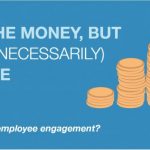As researchers, we don’t like to just make a knee-jerk prediction that something is going to fail. After all, that’s what research is for. To determine attitudes toward a particular idea or proposal, and see whether enough people support it to make it viable.
But we have enough experience and knowledge to be reasonably certain that New York City Mayor Michael Bloomberg’s proposal to eliminate soda sizes larger than 16 ounces is doomed to fail. And we can use the Kano Model, plus our own attitudes toward food, to figure it out. Let’s start with the Kano Model.

The Kano Model of Customer Satisfaction
According to the Kano Model, customers’ expectations about a company’s features can be divided into one of three features: Delight, Performance, and Basic.
The Delight Feature (or Excitement Feature) are those unexpected happenings from a company. For example, at a restaurant, you receive a free dessert because it’s your birthday. You’re delighted, because that free dessert brings you unexpected happiness and satisfaction.
The Performance Feature is a linear measurement: the better the restaurant’s food and service, the happier you are; the worse it is, the unhappier you are. Big portion size means satisfied customers, tiny portions mean unhappy customers, and so on.
The Basic Feature is the minimal expectation for performance, with no satisfaction for getting it right, but dissatisfaction if it’s wrong. At our restaurant, if we order sweet tea, and they bring it, they don’t get any credit for it; if they bring unsweetened tea, we’re unhappy.
How Does The Kano Model Tie Into Food and Soda?
Think back to when we were little kids (for me, Shawn, that was the 1970s). Soda was a special treat. We got it maybe once every few weeks for a special occasion, like a birthday or a special event. Soda was a Delight to us.
Then when we got older and had our own money, soda became a reward we gave ourselves. If we did something special, had a particularly hard day, or just plain felt like it, we had a soda. It was a Performance Feature. It was special, but we weren’t excited by it.
These days, thanks to the cheapness of soda and its ready availability, it’s a Basic expectation. We think we should be able to get it when we want, and are dissatisfied if we can’t, like if our restaurant ran out.
So What Does This Have to Do With New York’s Large Soda Ban?
New Yorkers are understandably upset at the prospect of not being able to get anything larger than a 16 ounce soda anywhere in the city. They don’t want the government telling them what they can eat or drink. They don’t want their city mandating their lifestyle.
But what it really boils down to is that they are dissatisfied that their favorite drinks will not be available in larger sizes. In essence, the 24 and 32 ounce sodas have become a Basic feature in their daily lives, and Mayor Bloomberg is threatening to take that away, leaving them very dissatisfied.
Past Research is Also On Our Side
The problem is, research shows this type of policy has been absolutely ineffective in the past.
Back in July 2008, the city of New York began to require chain restaurants to post calorie counts on restaurant menus. Afterward, four professors from New York University studied the effect of the law, comparing four fast food chains — McDonald’s, Burger King, Wendy’s, and KFC — in poor neighborhoods in NYC, with similar neighborhoods in New Jersey as a control group. They looked at the average calorie count of everyone’s lunch before and after the law was passed.
Before the law was passed, they found the average calorie count for both areas was 825 calories for lunch. But after the law was passed, the NYC count rose to 846 calories for lunch. Statistically, those two numbers are not that different. In fact, they’re within the margin of error. But you can’t ignore the pattern, or the fact that the numbers didn’t go down, or even stay the same.
When you look at New Jersey’s numbers over the same time period, they went from 825 to 835.
In other words, both groups went up, but the group that had the law passed went up a little more. Conventional wisdom says they should have gone down. After all, we’re showing people how bad the food is for them, so they should make smarter choices, right?
Wrong.
What Does This Mean?
Just by analyzing these basic ideas, this is what we can conclude:
- People have come to expect they can get soda any time they want.
- People have come to expect they can get any size soda any time they want.
- People already know that fast food and sugared soft drinks are bad for them.
- Even when presented with evidence that it’s not good for them, people will order the same, or even more, of the food that’s not good for them.
- When people don’t get what they want, they become dissatisfied, and look for ways to get it anyway.
So what’s going to happen if Mayor Bloomberg successfully bans larger-than-16-ounce sodas in New York City?
Free refills. Lots and lots of free refills. And the restaurants that charge for refills will see even more dissatisfaction because they’re charging more for what the customers have come to expect as a Basic feature.
So while we applaud Mayor Bloomberg’s efforts at making his citizens healthy, and reducing the risk for obesity and Type II diabetes, we can’t help think that simple human nature — as demonstrated by the Kano model, our attitudes toward food, and past experience — is going to make the problem worse before it gets better.
Photo credit: selney2 (Flickr, Creative Commons




